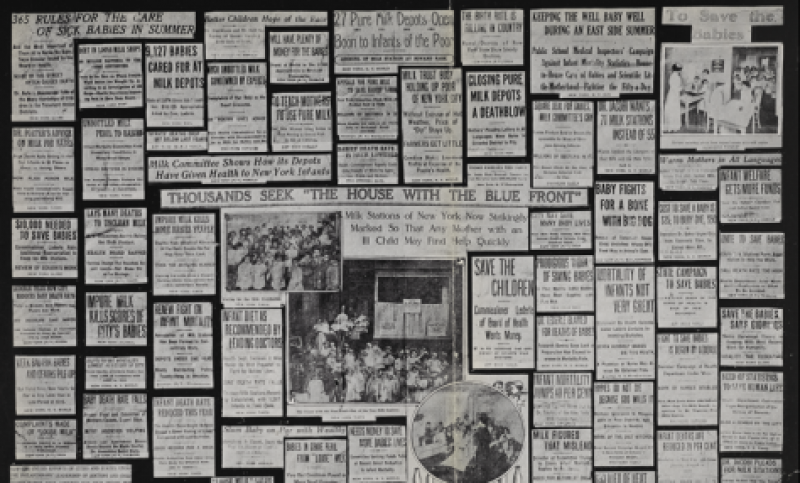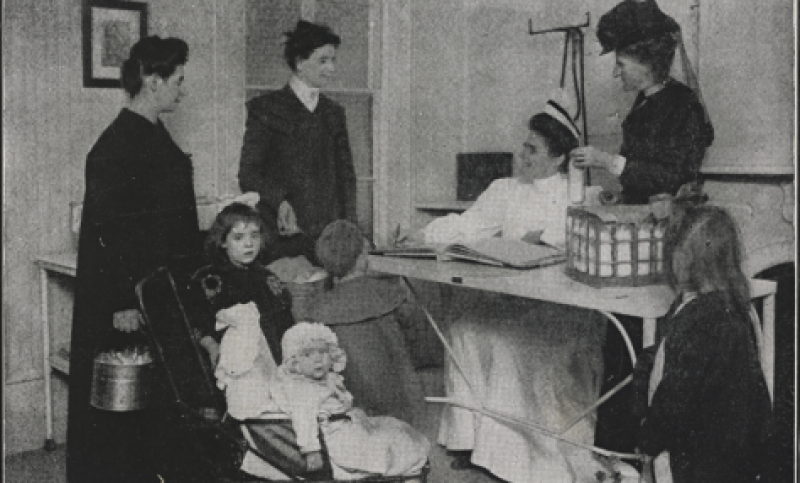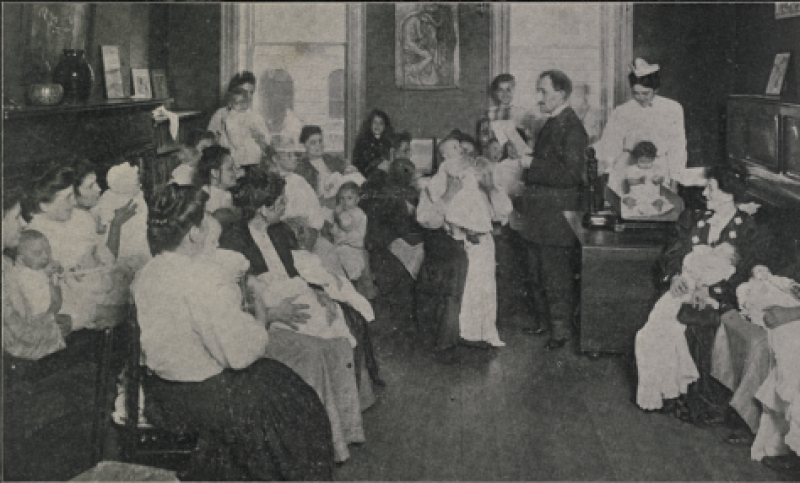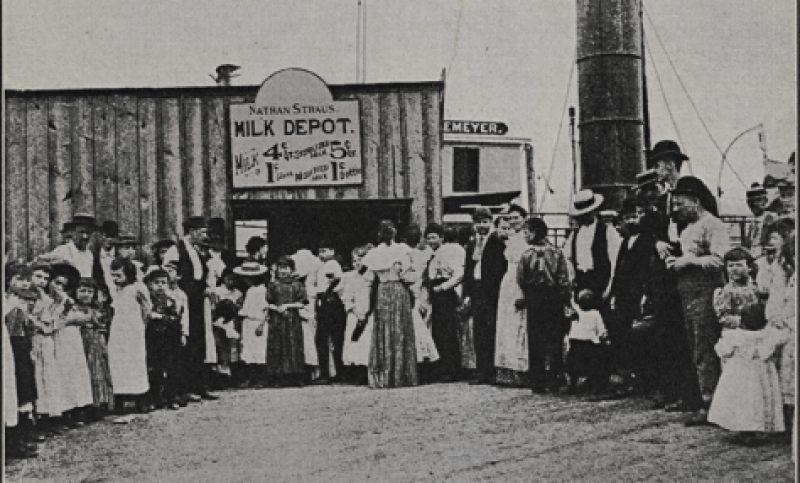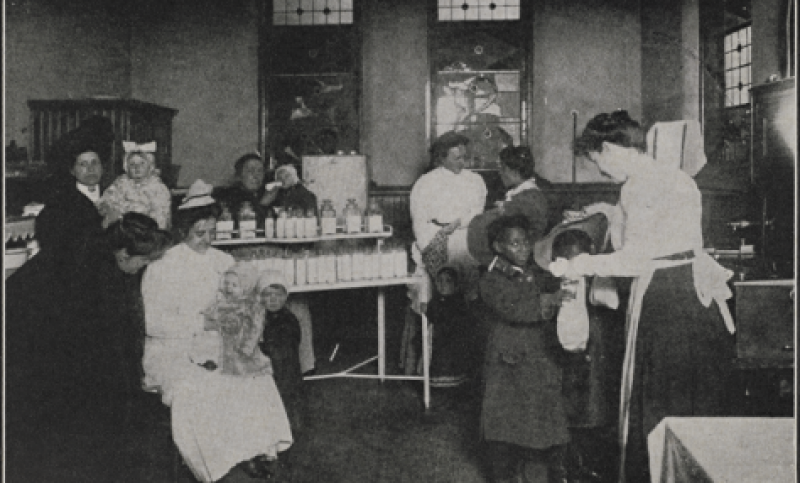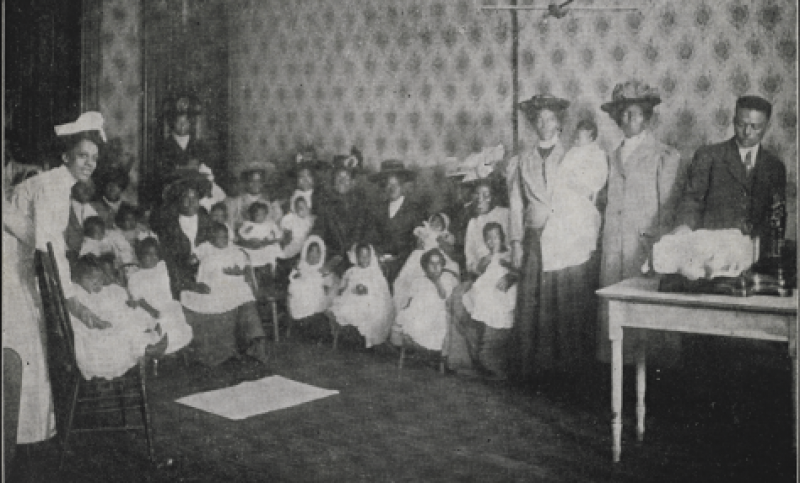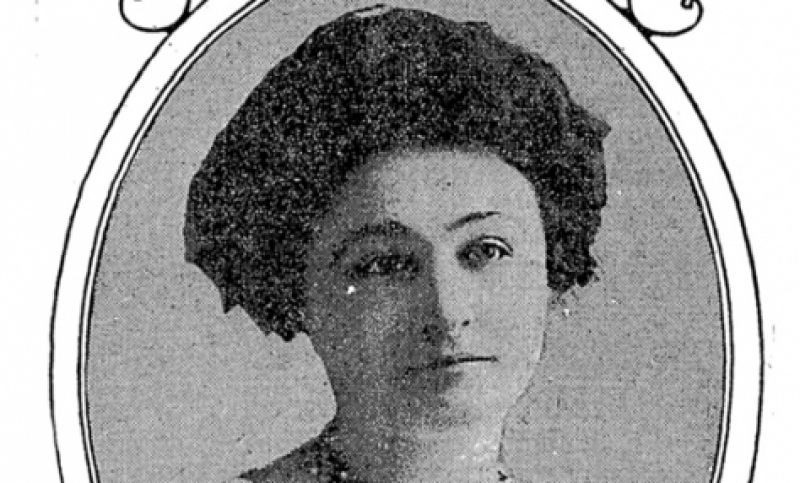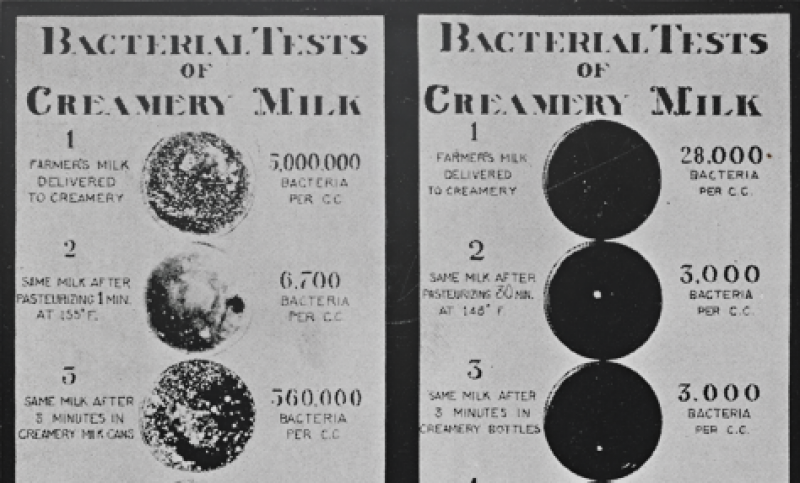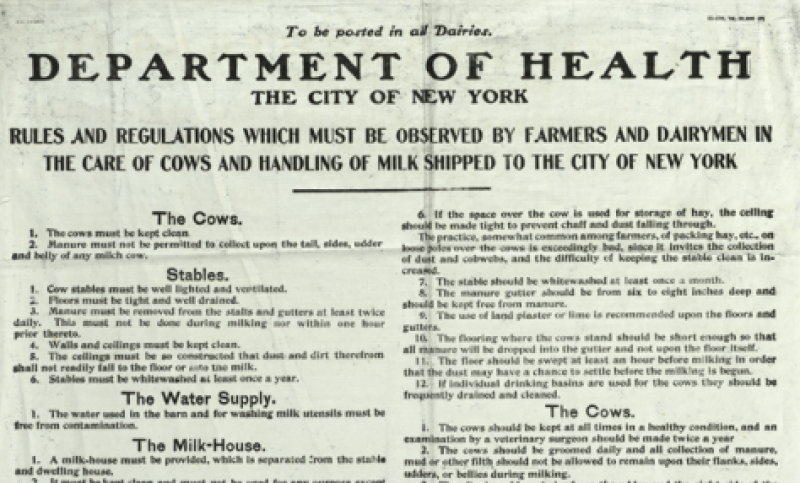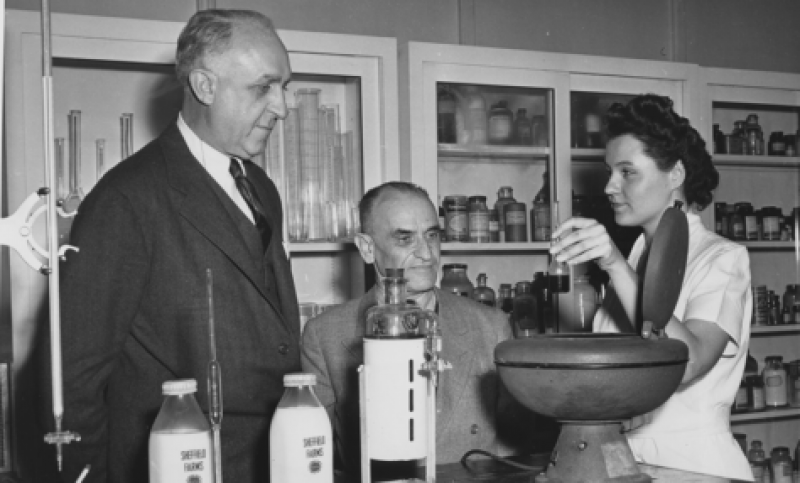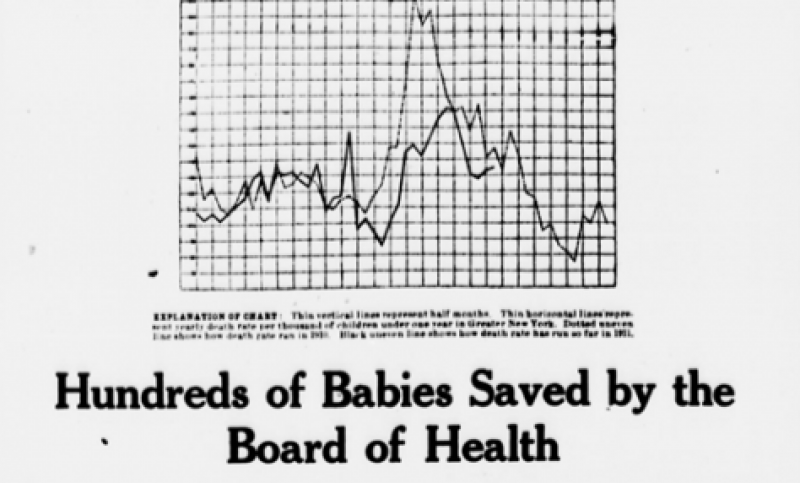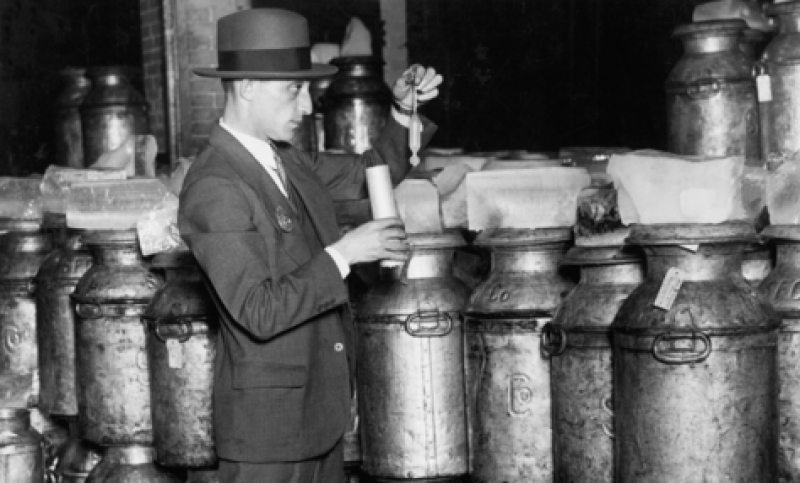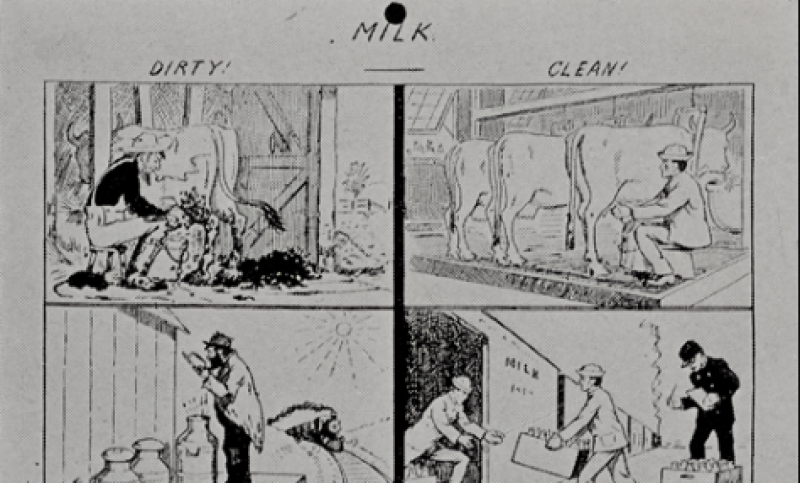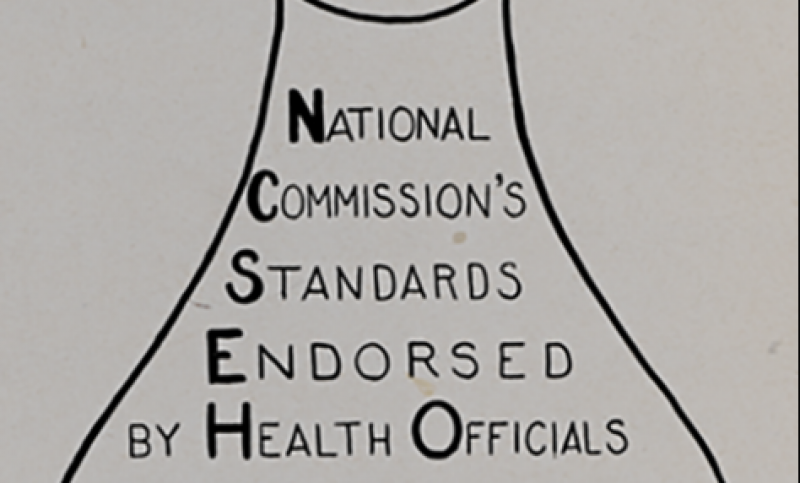
Community Actions
At the start of the twentieth century pure milk was a crusade, like votes for women, safer factories, and the conservation of natural resources. Thousands of committed New Yorkers contributed to the cause. Nurses volunteered to educate families on the benefits of clean milk. Mothers took every step to purify their children’s food. Businessmen contributed funds and lobbied for reforms while scientists raced to find solutions and city officials passed a series of improved regulations. A legion of reformers in Manhattanville and neighborhoods everywhere dedicated themselves to finding a solution to the milk crisis. Private citizens, impatient for business or government to agree on a solution, joined the movement. Nathan Straus, the owner of the Macy’s department store who lost his own daughter to milk-borne disease determined to put an end to “the slaughter of babies.” Investing his own personal wealth, Straus established milk stations where poor families could receive pasteurized milk for as little as a penny a glass.
As a center for food processing – where the dairy industry was such a prominent physical and economic presence – it was natural that Manhattanville would become an important site for milk activism. Families in the neighborhood took a leading role in the campaign to make life safer. The Morningside Milk Dispensary, at 122nd Street and Morningside Avenue, was the only place north of Central Park where families could purchase safe milk at affordable prices. The International Pure Milk League was founded in 1910 and by 1913, distributed pure milk to children at their Old Broadway milk station. Others received health advice and services at local churches. Other agencies – such as the New York Milk Committee – soon joined Straus, building depots around the city, the country, and eventually the world, to provide fresh, pasteurized milk to children. Crucial reforms accomplished a century ago mean that few shoppers in the supermarket dairy aisle worry about the safety of the milk products for sale today.
Industry Regulations
Realizing that contaminated milk came from unsanitary farms, New York City government’s first action was to call for the inspection and licensing of dairies. By the 1880s, city inspectors traveled all across upstate New York and neighboring states surveying suppliers to enforce strict rules that required all farmers hoping to sell milk in New York City have healthy cows, neat grounds, clean equipment, and trained staff. Old-fashioned wooden barns gave way to concrete, factory-like compounds powered by steam or electricity. This certification process resulted in cleaner dairies and reduced sickness, but the process was costly. By 1900, technical breakthroughs began to offer cheaper alternatives. Scientists could test samples from dozens of dairies for disease-laden bacteria in the same amount of time it took a dairy inspector to conduct a thorough investigation of a single farm. The most significant innovation in milk safety was the process of pasteurization which involved heating milk nearly to the boiling point for at least half an hour to kill deadly bacteria. In 1893 in New Jersey, Sheffield Farms opened the first pasteurization plant in the country, well ahead of its competitors. Pasteurization remained controversial into the twentieth century with many fearing that the quick fix of boiling milk to kill bacteria would result in fewer inspections and more unsanitary conditions., In 1907, a panel commissioned by President Theodore Roosevelt declared that pasteurization – though not a cure-all – worked effectively to “prevent much sickness and save lives.”
In 1912, New York City made pasteurization mandatory for cow’s milk. By the 1930s, all milk sold in the city had to be not only pasteurized and inspected but shipped and sold in sealed and tamper-proof containers. New York finally outlawed the deadly “loose milk” in 1933. Sanitary measures and pasteurization, advocated for by activist reformers, developed by scientists and industry and enforced by government regulations were all in place by the end of the end of the 1930s. Finally, the milk problem had been solved.
The pure milk crusade lasted more than a quarter of a century – from 1892 until 1925. Because of the work accomplished during these years, the City’s Department of Health estimated that the lives of more than 400,000 New York children under the age of five had been saved.
